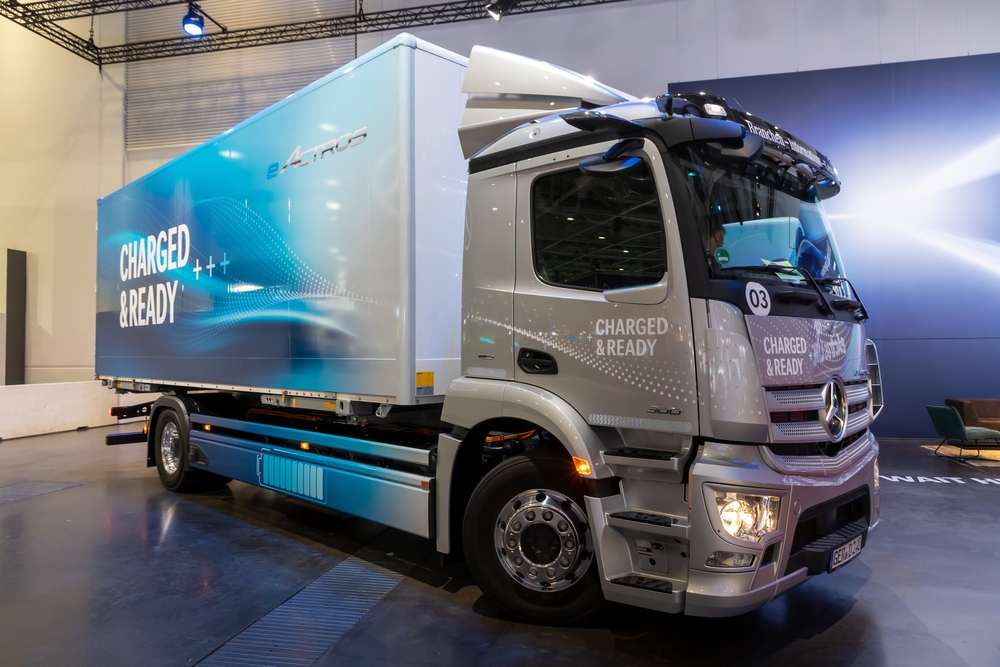Since the EPA announced its Phase 3 proposed greenhouse gas (GHG) emissions standards for heavy-duty vehicles, there has been significant political and industry pushback.
“Part of EPA’s proposal is to electrify 25% of new long-haul trucks by 2032, as well as 35% of new short-haul regional tractors and 50% of vocational vehicles,” says Overdrive Online. “The proposal also reopens the ‘Phase 2’ GHG emissions regs to make them more stringent for MY 2027 trucks and promulgates new emissions standards beginning with the 2028 model year.”
The Agency is also proposing to add warranty requirements for batteries and other components of zero-emission vehicles and to require customer-facing battery state-of-health monitors for plug-in hybrid and battery electric vehicles. Additionally, it proposes revisions to certain test procedures for heavy-duty engines.
“The proposed standards do not mandate the use of a specific technology, and EPA anticipates that a compliant fleet under the proposed standards would include a diverse range of technologies (e.g., transmission technologies, aerodynamic improvements, engine technologies, battery electric powertrains, hydrogen fuel cell powertrains, etc.),” states the proposed rule.
Although a specific technology isn’t required, analysts say the only path available to reach zero emissions in new trucks by 2045 is electric vehicles (EVs) powered by hydrogen fuel cells or batteries.
“The agency estimates the new standards will cost truck manufacturers $9 billion before considering the battery tax credits that were included in the Inflation Reduction Act,” says FreightWaves. “Including those credits reduces the compliance cost to manufacturers to $5.7 billion.
“For MY 2032, EPA estimates the upfront cost difference — including tax credits — between the retail price for an electric truck and one with an internal combustion engine at $582 for a short-haul day-cab tractor. That difference jumps to $14,712 for a long-haul sleeper-cab tractor.”
In addition to costs, industry complains the necessary infrastructure to support EVs in the trucking industry is too far behind to make the regulations feasible.
“The Phase 3 rule is … a blatant attempt to force consumers into purchasing [EVs] while a national charging infrastructure network remains absent for heavy-duty commercial trucks,” Lewie Pugh, owner-operator Independent Drivers Association executive vice president, told lawmakers at a supply chain hearing on Capitol Hill on May 10, according to FreightWaves in an article dated May 29, 2023.
“Professional drivers are skeptical of EV costs, mileage range, battery weight and safety, charging time, and availability,” Pugh stated. “It’s baffling that the EPA is pushing forward with more impractical emissions timelines without first addressing these overwhelming concerns.”
Many politicians are also opposed to the regulations.
“Speaking out against the Phase 3 truck rule and its follow-on companion rule regulating light-duty vehicles, Rep. Pat Fallon, R-Texas and chair of the House Oversight Committee’s subcommittee on energy policy and regulatory affairs, stated during a May 17 hearing that ‘Republicans are not anti-EV. They are however deeply concerned by the Biden administration’s apparent attempt to hijack the auto industry, strangle consumer choice, and determine what products are best for the American people in setting timelines,’” Freightwaves continues.
Comparisons are being drawn to the recent U.S. Supreme Court ruling in West Virginia v. EPA in which the Court decided the EPA had overstepped its authority in trying to administer the Clean Power Plan (CPP). Some believe these proposed regulations mandate a shift to new technology, which is similar to what the Agency attempted under the CPP.
Legal challenges to this regulation are certainly ahead.
It’s important to note the trucking industry isn’t opposed to cleaner technology.
“Jed Mandel, president of the Truck and Engine Manufacturers Association, said his group fully supports EPA’s goals of reducing emissions, but added that the ‘challenge is not forcing the development of zero-emission vehicles, but in developing the infrastructure’ required to operate them — whether that’s electricity for charging electric trucks or hydrogen for fueling hydrogen fuel cell trucks. ‘Trucking fleets must see a positive business case to invest capital’ into new technologies, he said, adding that fleets won’t purchase zero-emission trucks ‘if the infrastructure isn’t in place to operate them,’” according to Overdrive.

